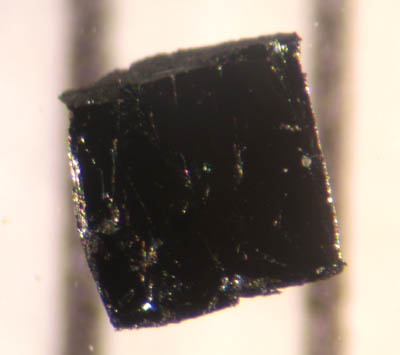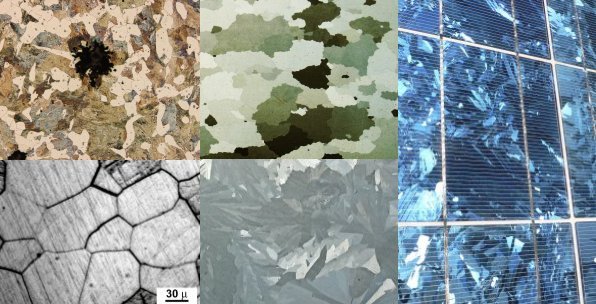|
Guy Deutscher (physicist)
Guy Deutscher (; 19 March 19364 May 2024) was an Israeli experimental physicist who specialized in solid-state physics, low-temperature physics, and superconductivity. He was a Professor Emeritus of Physics at Tel Aviv University. Early life and education Deutscher was born in Berlin, Germany in 1936. His family fled the Nazis in 1939, shortly before World War II, and settled down (first illegally) in Paris, France. In July 1942, he was arrested with his mother at the " Vel d'Hiv" roundup (la rafle du vélodrome d'hiver). Still, luckily because his father was a French prisoner of war, he escaped the fate of most of the other detainees who were sent to their deaths mainly to Auschwitz. After the war, Deutscher completed his Baccalaureat at Lycée Henri IV in 1953. In 1956, he passed the entrance exam and was accepted into the École nationale supérieure des mines de Paris, from which he graduated in 1959 with a Diplome d'ingenieur Civil des Mines, specializing in metallurgy. ... [...More Info...] [...Related Items...] OR: [Wikipedia] [Google] [Baidu] |
Aharon Kapitulnik
Aharon Kapitulnik (Hebrew: אהרון קפיטולניק; born 1953) is an Israeli-American experimental condensed matter physicist working at Stanford University. He is known primarily for his work on strongly correlated electron systems, low dimensional electronic systems, unconventional superconductors, topological superconductors, superconductivity and magnetism, transport in bad metals and precision measurements. Education and career Kapitulnik studied physics at Tel Aviv University in Israel (BA 1978, PhD 1983). After completing his doctoral studies under supervision of Guy Deutscher on the physics of disorder he moved to United States to work on polymers as a postdoc scholar in the group of Alan Heeger at UC Santa Barbara. In 1985 he joined the faculty of the Department of Applied Physics of Stanford University where he became a Professor Applied Physics and Physics in 1994. At Stanford, Kapitulnik formed a close collaboration with Theodore Geballe and Malcolm Beasley ... [...More Info...] [...Related Items...] OR: [Wikipedia] [Google] [Baidu] |
Superconductivity
Superconductivity is a set of physical properties observed in superconductors: materials where Electrical resistance and conductance, electrical resistance vanishes and Magnetic field, magnetic fields are expelled from the material. Unlike an ordinary metallic Electrical conductor, conductor, whose resistance decreases gradually as its temperature is lowered, even down to near absolute zero, a superconductor has a characteristic Phase transition, critical temperature below which the resistance drops abruptly to zero. An electric current through a loop of superconducting wire can persist indefinitely with no power source. The superconductivity phenomenon was discovered in 1911 by Dutch physicist Heike Kamerlingh Onnes. Like ferromagnetism and Atomic spectral line, atomic spectral lines, superconductivity is a phenomenon which can only be explained by quantum mechanics. It is characterized by the Meissner effect, the complete cancellation of the magnetic field in the interior of the ... [...More Info...] [...Related Items...] OR: [Wikipedia] [Google] [Baidu] |
Israeli Physicists
Israeli may refer to: * Something of, from, or related to the State of Israel * Israelis, citizens or permanent residents of the State of Israel * Modern Hebrew, a language * ''Israeli'' (newspaper), published from 2006 to 2008 * Guni Israeli (born 1984), Israeli basketball player See also * Israel (other) * Israelites (other), the ancient people of the Land of Israel * List of Israelis Israelis ( ''Yiśraʾelim'') are the citizens or permanent residents of the State of Israel. The largest ethnic groups in Israel are Israeli Jews, Jews (75%), followed by Arab-Israelis, Palestinians and Arabs (20%) and other minorities (5%). _ ... {{disambiguation Language and nationality disambiguation pages ... [...More Info...] [...Related Items...] OR: [Wikipedia] [Google] [Baidu] |
2024 Deaths
This is a list of lists of deaths of notable people, organized by year. New deaths articles are added to their respective month (e.g., Deaths in ) and then linked below. 2025 2024 2023 2022 2021 2020 2019 2018 2017 2016 2015 2014 2013 2012 2011 2010 2009 2008 2007 2006 2005 2004 2003 2002 2001 2000 1999 1998 1997 1996 1995 1994 1993 1992 1991 1990 1989 1988 1987 1986 Earlier years ''Deaths in years earlier than this can usually be found in the main articles of the years.'' See also * Lists of deaths by day * Deaths by year (category) {{DEFAULTSORT:deaths by year ... [...More Info...] [...Related Items...] OR: [Wikipedia] [Google] [Baidu] |
1936 Births
Events January–February * January 20 – The Prince of Wales succeeds to the throne of the United Kingdom as King Edward VIII, following the death of his father, George V, at Sandringham House. * January 28 – Death and state funeral of George V, State funeral of George V of the United Kingdom. After a procession through London, he is buried at St George's Chapel, Windsor Castle. * February 4 – Radium E (bismuth-210) becomes the first radioactive element to be made synthetically. * February 6 – The 1936 Winter Olympics, IV Olympic Winter Games open in Garmisch-Partenkirchen, Germany. * February 10–February 19, 19 – Second Italo-Ethiopian War: Battle of Amba Aradam – Italian forces gain a decisive tactical victory, effectively neutralizing the army of the Ethiopian Empire. * February 16 – 1936 Spanish general election: The left-wing Popular Front (Spain), Popular Front coalition takes a majority. * February 26 – February 26 Incident (二・二六事件, ... [...More Info...] [...Related Items...] OR: [Wikipedia] [Google] [Baidu] |
Pseudogap
In condensed matter physics, a pseudogap describes a state where the Fermi surface of a material possesses a partial energy gap, for example, a band structure state where the Fermi surface is gapped only at certain points. The term pseudogap was coined by Nevill Mott in 1968 to indicate a minimum in the density of states at the Fermi level, ''N''(''E''F), resulting from Coulomb repulsion between electrons in the same atom, a band gap in a disordered material or a combination of these. In the modern context pseudogap is a term from the field of high-temperature superconductivity which refers to an energy range (normally near the Fermi level) which has very few states associated with it. This is very similar to a true 'gap', which is an energy range that contains no allowed states. Such gaps open up, for example, when electrons interact with the lattice. The pseudogap phenomenon is observed in a region of the phase diagram generic to cuprate high-temperature superconductors, exi ... [...More Info...] [...Related Items...] OR: [Wikipedia] [Google] [Baidu] |
Superconducting Energy Gap
Superconductivity is a set of physical properties observed in superconductors: materials where electrical resistance vanishes and magnetic fields are expelled from the material. Unlike an ordinary metallic conductor, whose resistance decreases gradually as its temperature is lowered, even down to near absolute zero, a superconductor has a characteristic critical temperature below which the resistance drops abruptly to zero. An electric current through a loop of superconducting wire can persist indefinitely with no power source. The superconductivity phenomenon was discovered in 1911 by Dutch physicist Heike Kamerlingh Onnes. Like ferromagnetism and atomic spectral lines, superconductivity is a phenomenon which can only be explained by quantum mechanics. It is characterized by the Meissner effect, the complete cancellation of the magnetic field in the interior of the superconductor during its transitions into the superconducting state. The occurrence of the Meissner effect indicat ... [...More Info...] [...Related Items...] OR: [Wikipedia] [Google] [Baidu] |
High-temperature Superconductivity
High-temperature superconductivity (high-c or HTS) is superconductivity in materials with a critical temperature (the temperature below which the material behaves as a superconductor) above , the boiling point of liquid nitrogen. They are "high-temperature" only relative to previously known superconductors, which function only closer to absolute zero. The first high-temperature superconductor was discovered in 1986 by IBM researchers Georg Bednorz and K. Alex Müller. Although the critical temperature is around , this material was modified by Ching-Wu Chu to make the first high-temperature superconductor with critical temperature . Bednorz and Müller were awarded the Nobel Prize in Physics in 1987 "for their important break-through in the discovery of superconductivity in ceramic materials". Most high-c materials are type-II superconductors. The major advantage of high-temperature superconductors is that they can be cooled using liquid nitrogen, in contrast to previously known s ... [...More Info...] [...Related Items...] OR: [Wikipedia] [Google] [Baidu] |
Polycrystalline
A crystallite is a small or even microscopic crystal which forms, for example, during the cooling of many materials. Crystallites are also referred to as grains. Bacillite is a type of crystallite. It is rodlike with parallel longulites. Structure The orientation of crystallites can be random with no preferred direction, called random texture, or directed, possibly due to growth and processing conditions. While the structure of a single crystal is highly ordered and its lattice is continuous and unbroken, amorphous materials, such as glass and many polymers, are non-crystalline and do not display any structures, as their constituents are not arranged in an ordered manner. Polycrystalline structures and paracrystalline phases are in between these two extremes. Polycrystalline materials, or polycrystals, are solids that are composed of many crystallites of varying size and orientation. Most materials are polycrystalline, made of a large number crystallites held together by ... [...More Info...] [...Related Items...] OR: [Wikipedia] [Google] [Baidu] |
High-temperature Superconductivity
High-temperature superconductivity (high-c or HTS) is superconductivity in materials with a critical temperature (the temperature below which the material behaves as a superconductor) above , the boiling point of liquid nitrogen. They are "high-temperature" only relative to previously known superconductors, which function only closer to absolute zero. The first high-temperature superconductor was discovered in 1986 by IBM researchers Georg Bednorz and K. Alex Müller. Although the critical temperature is around , this material was modified by Ching-Wu Chu to make the first high-temperature superconductor with critical temperature . Bednorz and Müller were awarded the Nobel Prize in Physics in 1987 "for their important break-through in the discovery of superconductivity in ceramic materials". Most high-c materials are type-II superconductors. The major advantage of high-temperature superconductors is that they can be cooled using liquid nitrogen, in contrast to previously known s ... [...More Info...] [...Related Items...] OR: [Wikipedia] [Google] [Baidu] |
Cuprate Superconductor
Cuprate superconductors are a family of High-temperature superconductivity, high-temperature superconducting materials made of layers of copper oxides () alternating with layers of other metal oxides, which act as charge reservoirs. At ambient pressure, cuprate superconductors are the highest temperature superconductors known. Cuprates have a structure close to that of a two-dimensional material. Their superconducting properties are determined by electrons moving within weakly coupled copper-oxide () layers. Neighbouring layers contain ions such as lanthanum, barium, strontium, or other atoms that act to stabilize the structures and dope electrons or holes onto the copper-oxide layers. The undoped "parent" or "mother" compounds are Mott insulator, Mott insulators with long-range antiferromagnetic order at sufficiently low temperatures. Single Electronic band structure, band models are generally considered to be enough to describe the electronic properties. The cuprate supercon ... [...More Info...] [...Related Items...] OR: [Wikipedia] [Google] [Baidu] |
Percolation Threshold
The percolation threshold is a mathematical concept in percolation theory that describes the formation of long-range connectivity in Randomness, random systems. Below the threshold a giant connected component (graph theory), connected component does not exist; while above it, there exists a giant component of the order of system size. In engineering and coffee making, percolation represents the flow of fluids through porous media, but in the mathematics and physics worlds it generally refers to simplified Lattice model (physics), lattice models of random systems or networks (Graph (discrete mathematics), graphs), and the nature of the connectivity in them. The percolation threshold is the critical value of the occupation probability ''p'', or more generally a critical surface for a group of parameters ''p''1, ''p''2, ..., such that infinite connectivity (''percolation'') first occurs. Percolation models The most common percolation model is to take a regular lattice, like a squa ... [...More Info...] [...Related Items...] OR: [Wikipedia] [Google] [Baidu] |






